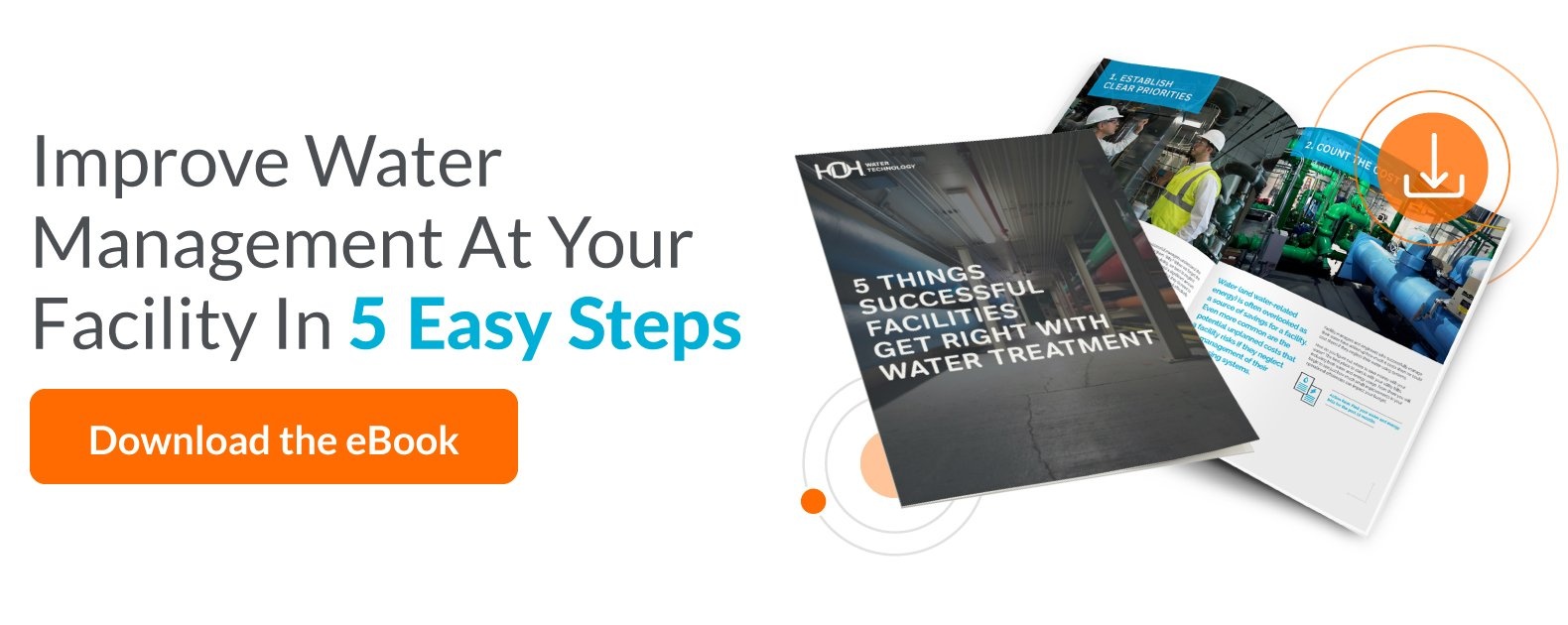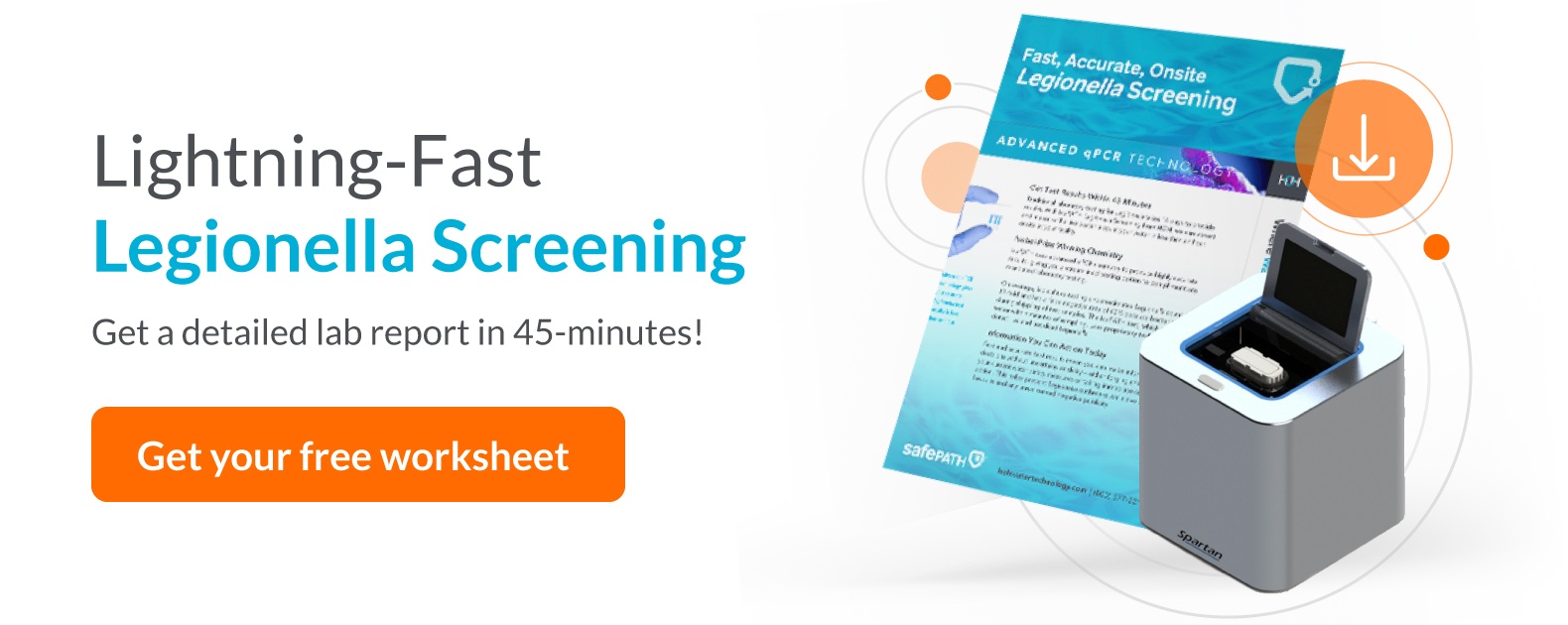

There are few water-related headlines that make facility managers more nervous than seeing a Legionella outbreak reported in their area. This is especially true when the case involves fatalities or millions of dollars in legal claims. Unfortunately, for many facility managers, the costs of a Legionella claim are all too real.
What Will A Legionella Claim Cost?
A 2019 CDC report revealed that cases of Legionnaires’ disease had reached a record high in 2018 — a more than eight-fold increase since the numbers began to climb nearly two decades ago.
While not every case of Legionnaires’ disease results in a lawsuit, it’s worth knowing the potential costs.
Reported jury awards have been as high as $6MM and many cases are settled out of court without published settlement amounts.
Keep in mind these are just the reported cases – there could be settled claims out there that are even higher.
One of the highest-profile cases in recent years unfolded at the state-run Illinois Veterans Home. Over the course of three consecutive years, Legionnaires’ disease killed thirteen people while more than sixty others got sick. Eleven families are now suing the state.
Legionella lawsuits are also more common than ever before. Mike Griffin, Vice President of Water Safety Compliance for HOH Water Technology, provides some insight:
“Nobody knew much about Legionella outbreaks until the late 70s early 80s. Now it’s a household name and it’s being litigated aggressively.”
What’s more, the possible settlement amounts have no limits:
“There is no ceiling for a Legionella claim – they could go upwards of tens of millions of dollars depending on the jury.”
Claims are decided on a case-by-case basis, but some of the criteria used to establish the settlement figures are:
- Scope – how many people were affected?
- Severity – including fatalities?
- Negligence – what had the facility done/not done to prevent this?
- Documentation – can the facility defend its case?
The road to court starts with an investigation into exactly what happened.
What Happens When Someone is Infected?
Once someone in a community contracts Legionnaires’ Disease or Pontiac Fever, a discovery process begins to locate the cause. Early discovery is typically expedited quickly, sometimes in just a couple of days.
It starts with authorities from local, state or federal agencies interviewing victims to piece together a map of where they’ve been. Sometimes it’s a convoluted road, such as when a patient hopped hospitals or long-term care facilities. It’s important to note that cases specifically against healthcare facilities will involve additional agencies such as JCAHO or CMS.
Pro Tip: Regular sampling is a good strategy for clearing your facility if a victim stayed at multiple facilities.
Once a possible ground zero for the outbreak is established, the investigation could turn toward your facility, says Griffin, “They’ll give you a heads up first, and tell you who’s coming. It could be the city, county, or state health departments. In larger outbreaks, it might even involve the CDC.”
The next phase of the investigation will involve the agencies taking their own water samples and auditing your:
- Potable hot and cold water systems
- Water management programs, including chemical application
- Individual equipment like cooling towers and ice machines
Griffin notes: “They’ll ask if you’ve done any Legionella testing yourselves and ask to see the results. This is where documentation of your water sampling and management protocols is extremely important.”
This part of the investigation will likely include more interviews, including isolating individual employees to inquire about your operational procedures. They’ll also look at external factors that may have been to blame, for example, a water main break near the building.
If it is determined that your facility is at fault, authorities will then shift their focus to your water treatment protocols.
“They’ll ask you if you have a Water Safety Management Plan. If you don’t, that’s trouble – but so is having one and not adhering to it,” says Griffin.
If it is concluded that your facility is the source, it will be publicly announced. Now the Legionella mitigation – as well as the PR nightmare – begins as you try to contain a very public health crisis.
What should do you do next?
Mitigating Legionella In Your Facility
Legionella mitigation is not cheap – facilities have spent millions on the effort. And while there are many standardized approaches found online that can be used to remediate Legionella, each situation is unique since water systems vary from facility to facility. Using a customized remediation plan will often result in faster success, as well as reducing the cost of remediation. Here are a few steps to consider:
1. Temperature Control
Turn up your water temperature above 150 degrees to kill the Legionella in your pipes.
2. Hyper-chlorinate
Elevate your chlorine levels, circulate for 24-48 hours and retest.
3. Drain, Clean & Refill
If levels are still dangerous on your retest, you’ll have to drain your system, clean and refill it.
4. Test Clean
Be able to show health agencies that you tested clean.
Bottom line: the government won’t leave your facility until they’re satisfied that you have the protocols and teams in place to stay Legionella-free.
Legionella Claim: Costs To Your Reputation
Unfortunately, there’s a huge cost to your reputation according to Griffin: “Skilled nursing facilities and assisted living facilities are particularly vulnerable to reputation damage. These places market themselves as ‘putting resident care first’ …and then they suffer a Legionella outbreak? That really hurts their business.”
An outbreak can haunt you long after the news headlines fade.
“It can affect your business for decades and beyond. Some people are still talking about the outbreak that happened ten years ago in their town.”
Which Facilities Are At Risk?
According to the CDC, if your facility fits any of the criteria below, you need a plan to prevent and mitigate Legionella growth:
1 Building Is Ten Stories Or Higher
This is straightforward: if your building is ten stories or higher you need a comprehensive water safety plan.
2 Specific Water Features
Cooling towers, decorative fountains, hot tubs, and humidifiers require an individual safety plan per item.
3 Hospitals, SNFs and ALFs
Licensed healthcare facilities must have a documented water safety plan or they will not receive Medicare funding.
Compliance with ASHRAE standard 188 requires facilities to assign a water safety team to execute their plans.
How To Protect Your Facility and Reputation
We know you’ve got a lot more than water management on your plate, so here’s a quick list of things you can do to reduce the risk of Legionella growth in your facility:
Learn these Legionella management terms, common causes and risk factors.
Follow the CDC recommendations, including their Legionella procedure plan/questionnaire.
Know the ASHRAE 188 standard and understand Legionella management by downloading this kit.
Hire a water safety partner to help you navigate compliance issues and adopt a program that works for you, including putting a formal water safety management plan in place.
Form a water safety team at your facility using this free template.
Griffin concludes that the key to preventing damage to your reputation and protecting yourself from the risk of litigation is to have a plan, and keep clear documentation:
“Our plan is practical and can be customized to match your team and resources because we recognize that facility maintenance hours are limited. Beyond that, we’ll provide complete documentation of that plan to cover you in the event that you need it.”
Recent Blog Posts

Five Ways to Increase the Efficiency of Your Closed Loop System

Global 6K for Water


